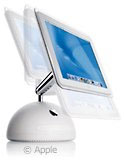Rodney O. Lain - 2002.03.25
Their architecture, I knew something about. I'd
destroyed acres of it, centuries ago. Felt like yesterday
sometimes.
- Forever Free, Joe Haldeman
I am sitting in a local tavern, sipping on an "adult" beverage,
inconspicuously observing the mating rituals of that wild and
woolly beast known as the single man.
Look! Two of them have broken off from their pack, closing in on
an unsuspecting prey. Uncharacteristically patient, the two animals
circle the prey, a fair-formed creature known as "blonde." She was
in a pack of four, but the other three broke ranks to involve
themselves in a crude ritual called "dancing." Looks dangerous.
In a bold move, one of the beasts approaches the prey,
attempting, with guttural utterances, to entice her to follow him
into a crudely built trap colloquially known as a bachelor's
pad.
In an expected move, she replies to his enticement and resumes
drinking from a small glass. He stands still for several seconds,
as if stricken with pain. Then, he shakes his head and walks
dazedly back to his hunting pack.
Interesting encounter. For the next few weeks, I will research
this encounter, especially the words this subhuman spoke to his
running mates.
"Man, she 'gave me the Heisman.'"
For years, the younger members of this species has been studied
by its elders. The elders in turn spend copious amounts of time
attempting to fathom the speech of its younger ones, for youth
speech patterns are invented and reinvented at a dizzying pace and
with an equally dizzying frequency. Who can keep up with it?
I ask myself this while viewing the single man in his natural
habitat. Over time, though, I eventually figure out the speech
patterns spoke by my young quarry. For example, giving someone a
Heisman means that a man's amorous advances have been rebuffed by
the object of his affection, symbolized by the stiff-armed black
illustrated in the figure of the Heisman
trophy. Next week, the same actions will be described in other,
equally descriptive ways.
Such is language. Like time, it marches on, quickly, as
exemplified by the Great
Vowel Shift of the 15th and 16th centuries.
Other things don't change as fast. Computers, for example.
It's been nigh 15 years, and we still have the basic-beige box
encasing our gigahertz processors, multi-gig hard drives, and
multimegabyte RAM. Yes, computer makers like Apple  and Sony "get it" and are making computers
attractive - attractive enough to be moved out of offices and back
rooms, over to more prominent areas of the house and workplace. But
this isn't enough for me.
and Sony "get it" and are making computers
attractive - attractive enough to be moved out of offices and back
rooms, over to more prominent areas of the house and workplace. But
this isn't enough for me.
Many complain about the sad state of PC industrial design. I
know, I know. Looks aren't important with computers. But, then, why
is it important with everything else? Why is it important when
we're choosing cars, clothes, PDAs, printers, MP3 players, lamps,
homes, and ink pens, but no one seems to mind an ugly computer? For
the life of me, I can't figure this one out.
I sometimes wonder if I'm in a Twilight Zone where I am the only
one who notices how ugly the tech word is: None of my friends and
coworkers seem to care about the aesthetics of their OS or PC. Why
do I care so much about looks?
Last year I spent several days trying to find just the right
glass desk to match my G4 Cube.
Then I decided that I need to remodel my basement office to enhance
the look of the table. Then, of course, I needed new furniture.
Will it take purging of the computer industry (as many predict)
to force PC makers to begin considering factors other than MHz and
RAM to distinguish themselves from the rest of the herd?
Consider this the beginning of a vigil, waiting for the rest of
the industry to put to death the notion that style is worthless.
Apple has proven time and again that style sells when coupled with
the right features and specs.
How long before the rest of the industry admits that Apple has
the right idea and joins the move to put form and function on an
even keel. 


 and Sony "get it" and are making computers
attractive - attractive enough to be moved out of offices and back
rooms, over to more prominent areas of the house and workplace. But
this isn't enough for me.
and Sony "get it" and are making computers
attractive - attractive enough to be moved out of offices and back
rooms, over to more prominent areas of the house and workplace. But
this isn't enough for me.
